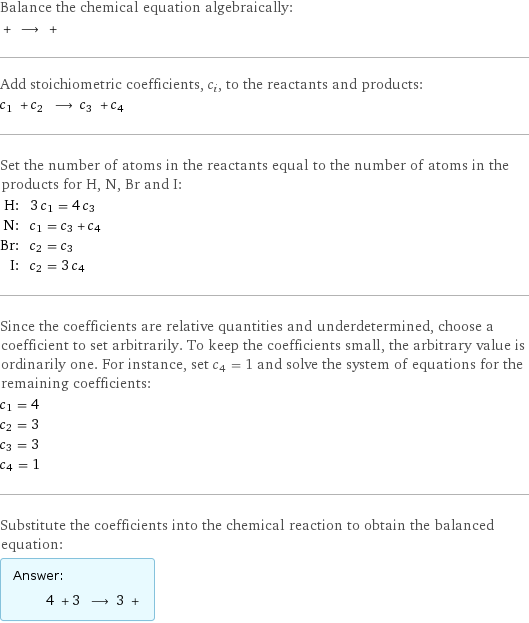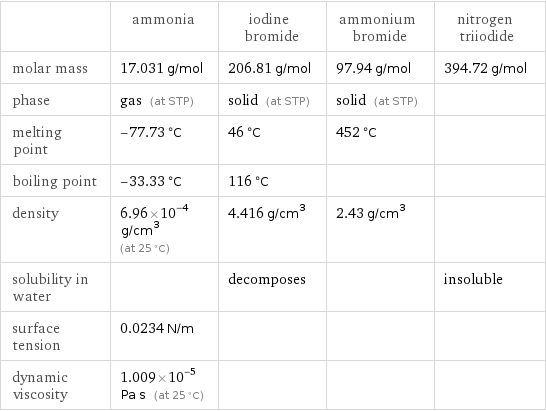Input interpretation

ammonia + iodine bromide ⟶ ammonium bromide + nitrogen triiodide
Balanced equation

Balance the chemical equation algebraically: + ⟶ + Add stoichiometric coefficients, c_i, to the reactants and products: c_1 + c_2 ⟶ c_3 + c_4 Set the number of atoms in the reactants equal to the number of atoms in the products for H, N, Br and I: H: | 3 c_1 = 4 c_3 N: | c_1 = c_3 + c_4 Br: | c_2 = c_3 I: | c_2 = 3 c_4 Since the coefficients are relative quantities and underdetermined, choose a coefficient to set arbitrarily. To keep the coefficients small, the arbitrary value is ordinarily one. For instance, set c_4 = 1 and solve the system of equations for the remaining coefficients: c_1 = 4 c_2 = 3 c_3 = 3 c_4 = 1 Substitute the coefficients into the chemical reaction to obtain the balanced equation: Answer: | | 4 + 3 ⟶ 3 +
Structures

+ ⟶ +
Names

ammonia + iodine bromide ⟶ ammonium bromide + nitrogen triiodide
Chemical names and formulas

| ammonia | iodine bromide | ammonium bromide | nitrogen triiodide Hill formula | H_3N | BrI | BrH_4N | I_3N name | ammonia | iodine bromide | ammonium bromide | nitrogen triiodide
Substance properties

| ammonia | iodine bromide | ammonium bromide | nitrogen triiodide molar mass | 17.031 g/mol | 206.81 g/mol | 97.94 g/mol | 394.72 g/mol phase | gas (at STP) | solid (at STP) | solid (at STP) | melting point | -77.73 °C | 46 °C | 452 °C | boiling point | -33.33 °C | 116 °C | | density | 6.96×10^-4 g/cm^3 (at 25 °C) | 4.416 g/cm^3 | 2.43 g/cm^3 | solubility in water | | decomposes | | insoluble surface tension | 0.0234 N/m | | | dynamic viscosity | 1.009×10^-5 Pa s (at 25 °C) | | |
Units
